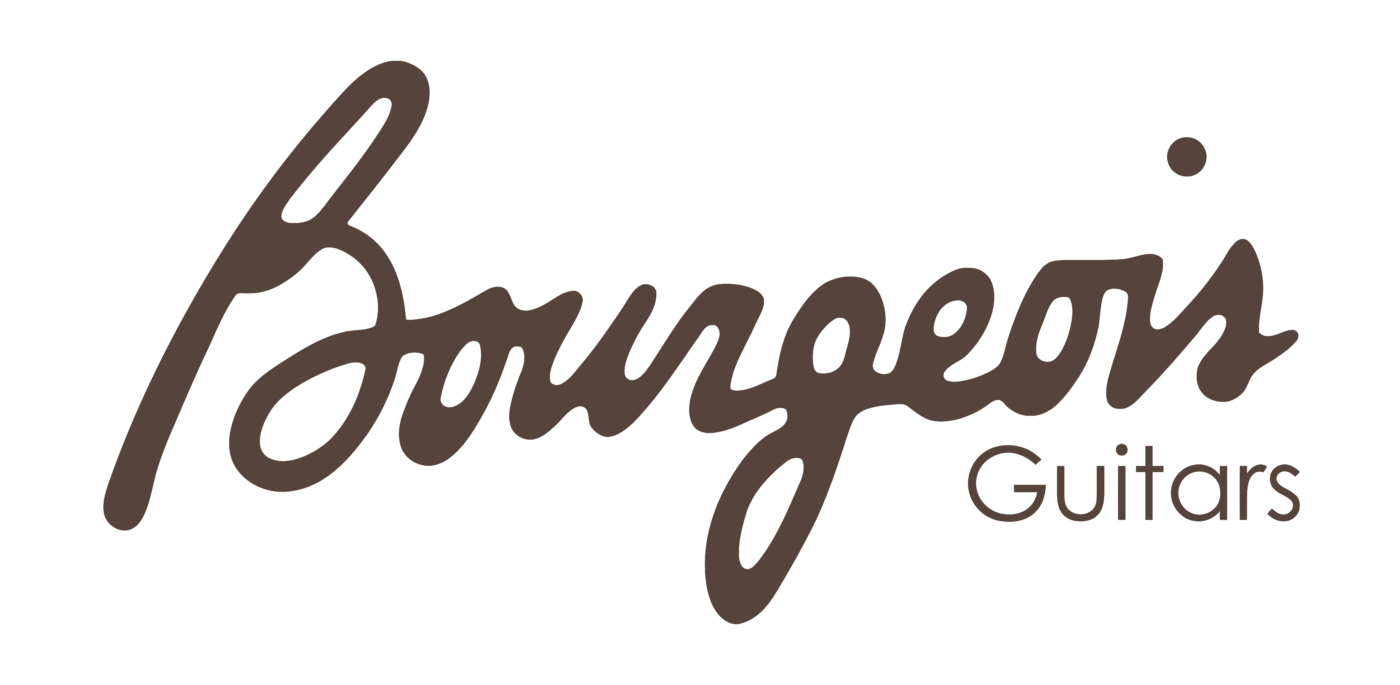Uncategorized, Homepage News
“Tapping In” – a look into Dana Bourgeois’ process of hand voicing

What differentiates a Bourgeois Guitars instrument and makes it such a visual and sonic masterpiece? In the realm of the finest handmade acoustic guitars, other brands may also feature superior tonewoods, beautiful attention to fit and finish, and a legacy of design excellence that endures the test of time.
But it’s not enough merely to build a fine guitar to static specifications; it needs a touch of grace to capture the player’s musical soul. That’s where our founder, Dana Bourgeois, applies the “special sauce” he’s learned over a lifetime of building – and especially – hand-voicing great acoustic guitars for many of today’s finest players.
Tap tuning, as Bourgeois Guitars has perfected it, allows Dana and his crew to bring out as many of the top’s native harmonic notes as possible, letting the guitar’s fullest voice ring.
Borrowed and refined from violin family luthierie, tap tuning focuses primarily on the guitar’s top soundplate with the rough braces glued in place before the top is attached to the back and sides. By holding the top lightly and tapping it in key locations, Dana actually hears the musical frequencies woodbound inside the raw spruce braces. By flexing the top as a whole and in specific places, Dana feels and sees not just where the braces need to be slightly more flexible, but in which direction to the grain. The voicing process – which can take an hour and is like watching a master sculptor’s finishing flourishes bring cold marble to life – incorporates practically every human sense but taste.
Like a taut string, Dana explains, a piece of wood can produce a fundamental tone and an array of harmonics. Elements such as clarity of tone, relative harmonic complexity, and high, low or mid bias, can be discovered readily by holding and tapping a piece of wood. Same for a guitar top. Think of each brace like a wooden marimba key, he suggests, that must be delicately shaped and carved before it can sing true to pitch.
“High-end marimba makers tune the fundamental note and the first three harmonics of each wooden bar,” Dana explains. “I started looking at a marimba key, and I thought, ‘Aha. That’s really just a scalloped brace!’”
Combine those hand-shaped braces working in balance and synchrony with the graduated wood ofthetop as a complex musical mechanism, and you get the exquisitely tap-tuned Bourgeois guitar top.
Tapping with different fingers and even his nails, Dana listens acutely to the story the wood tells him. Then, in precise motions gleaned from voicing countless guitars, he trims and pares the bracing material where it’s dampening the top’s harmonic potential. With an artisan’s grace, Dana peels off curls of wood not much thicker than moth wings using a chisel or surgically sharp finger planes to achieve proper weight and flex. Once properly voiced, the braces and other interior surfaces are finished using sanding blocks and foam to create the smoothest, most reflective acoustic surface possible.
A similar process tunes the back and its longitudinal braces, but Dana says it’s the top that drives the show. “I think of the back as a kind of sympathetic resonator with its own nice mix of harmonics,” he explains. “When done right it complements what the top is doing.”
Watching Dana as he taps a top during the tuning process, you can actually hear it begin to begin to sound like a marimba key, with warm woody fundamental notes glistening with gorgeous harmonics that float away from the wood as it vibrates.
“There’s a whole big harmonic soup going on with these ‘marimba bars,’ so to speak. The object is to get a full sound, with a musical note that’s rounder and fuller and airy. Each of these marimba bars has a fundamental note and harmonics, and they may be out of phase with each other. If you have two notes that are vibrating a little out of phase, you can get cancelation, and just by altering a brace a little you can correct that cancellation, and you get two different notes instead of no note. As you remove wood, you can actually raise or lower pitches. It’s just a matter of getting to the right weight, the right flexibility, and a
nice mix of overtones. I like getting ‘black key’ notes, so to speak, it adds a lot of complexity to the tone,” our founder explains.
“So the (tap tuning) theory is to hold the top and tap it everywhere and get great sounds no matter where you tap it. It’s a process of finding the resonant frequency of the brace. So we want to get her grains to ring,” he adds enthusiastically.
For more information on how Bourgeois’s expertise in how voicing guitar tops helps give owners the sound of a lifetime, please visit our website.
Article by – David McCarty
